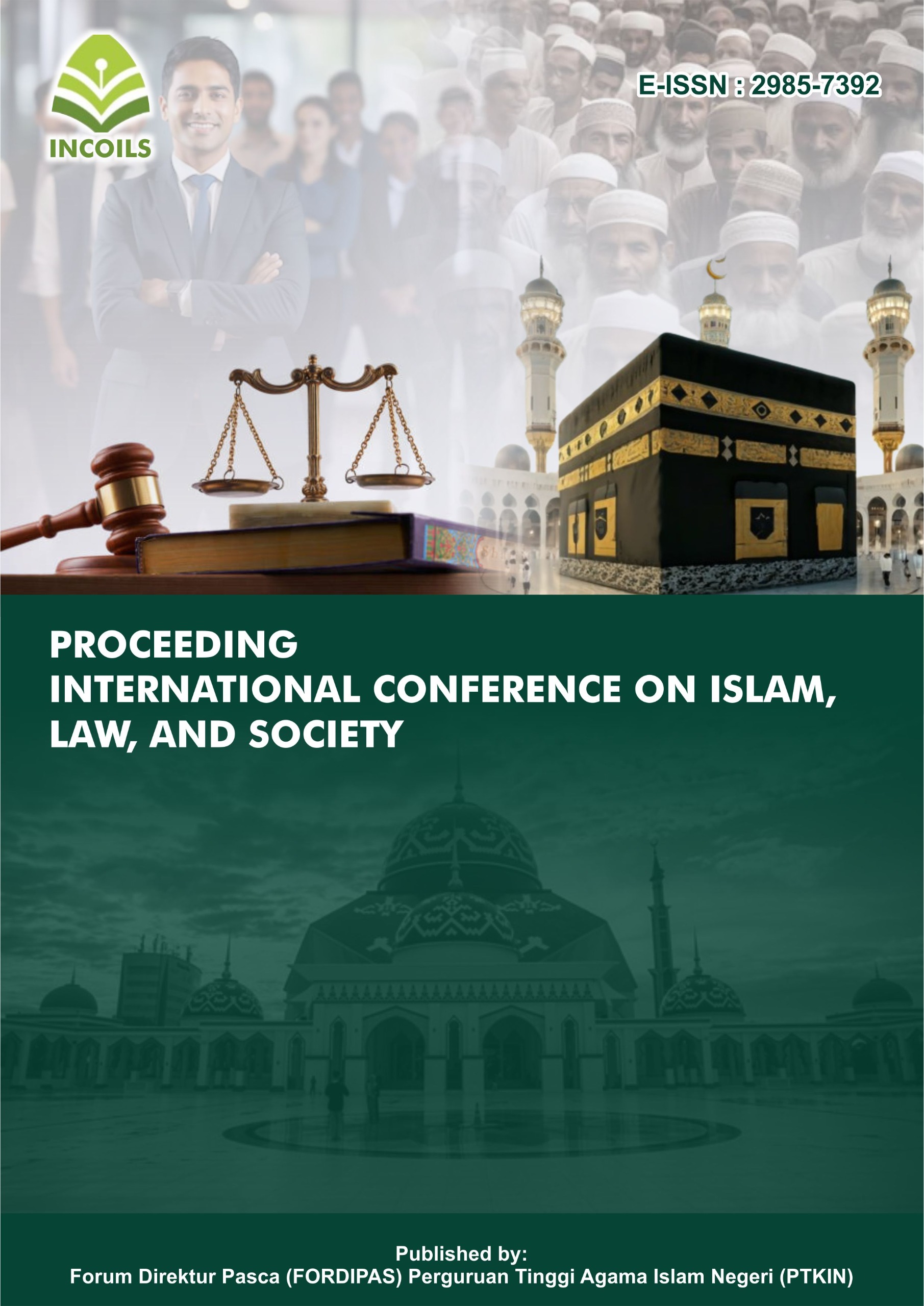ABILITY OF FEMALE STUDENTS IN SOLVING PYTHAGORAS THEOREM PROBLEMS GIVEN MATHEMATICS LEARNING OUTCOMES
DOI:
https://doi.org/10.70062/incoils.v2i1.19Keywords:
female students, ability to solve problems, learning outcomes of mathematicsAbstract
This research was motivated by the diverse abilities of female students in learning mathematics, especially solving Pythagorean theorem problems given by the teacher or those in the Student Worksheets based on students learning outcomes in mathematics. This study aims to describe the ability of female students to solve Pythagorean theorem problems in terms of their mathematics learning outcomes at MTs Negeri 9 Blitar. This study uses a qualitative approach to the type of case study. The subjects in this study were 6 class VIII female students at MTs Negeri 9 Blitar. Data collection techniques using tests, interviews, and documentation. Data analysis techniques use the Miles and Huberman models. The results of the study showed that female students with high learning outcomes were able to carry out four implementations of Polya’s steps in solving problems which included: understanding the problem, developing a solution plan, carrying out the settlement plan, and re-examining the solutions obtained. Female students with moderate learning outcomes can carry out three implementations of Polya’s steps in solving problems which include: understanding the problem, developing a solution plan, and re-examining the solutions obtained. Female students with low learning outcomes can carry out two applications of Polya’s steps in solving problems which include: understanding the problem and re-examining the solutions obtained.
References
Aliyah, Ita Mafajatul. dkk. 2019. “Kemampuan Koneksi Matematis Siswa Ditinjau dari Kemampuan Awal dan Gender,” dalam Jurnal Didaktik Matematika 6, no. 2 (2019), 161-178.
Anugraheni, Indri. 2019. “Pengaruh Pembelajaran Problem Solving Model Polya Terhadap Kemampuan Memecahkan Masalah Matematika Mahasiswa,” dalam Jurnal Pendidikan 4, no. 3 (2019): 1-6.
Dahar, Ratna Wilis. 2011. Teori-teori Belajar dan Pembelajaran. Jakarta: Erlangga.
Harususilo, Yohanes Enggar. 4 Desember 2019. Skor PISA Terbaru Indonesia, Ini 5 PR Besar Pendidikan pada Era Nadiem Makarim. Jakarta: Kompas.
Kementerian Pendidikan dan Kebudayaan. 2017. Matematika SMP/MTs Kelas VIII Semester 2 Edisi Revisi 2017. Jakarta: Kementerian Pendidikan dan Kebudayaan.
Lestari, Witri. 2017. “Pengaruh Kemampuan Awal Matematika dan Motivasi Belajar Terhadap Hasil Belajar Matematika,” dalam Jurnal Analisa 3, no. 1 (2017): 76-84.
MZ, Zubaidah Amir. “Perspektif Gender Dalam Pembelajaran Matematika,” dalam Jurnal Marwah 12, no. 1 (2013): 14-31.
NCTM. 2000. Principles and Standards for School Mathematics. USA: The National Council of Teacher Mathematics Inc.
Pramesti, Santika Lya Diah dan Juwita Rini. 2019. “Analisis Kemampuan Pemecahan Masalah Peserta Didik Berdasarkan Strategi Polya pada Model Pembelajaran Problem Based Learning Berbasis Hands On Activity,” dalam Journal of Medives: Journal of Mathematics Education IKIP Veteran Semarang 3, no. 2 (2019): 224-236.
Rahmawati, Novika dan Maryono. 2018. “Pemecahan Masalah Matematika Bentuk Soal Cerita Berdasarkan Model Polya pada Siswa Kelas VIII MTs Materi Pokok SPLDV,” dalam Jurnal Tadris Matematika 1, no. 1 (2018): 23-34.
Riani, Rifa Wahyu. 2019. “Analisis Proses Pemecahan Masalah Siswa Program Akselerasi dan Kelas Reguler di SMPN 3 Malang,” dalam Skripsi, (2019): 6.
Russefendi. 2004. Pengajaran Matematika Modern. Bandung: Tarsito.
Sriyanto. 2007. Strategi Sukses Menguasai Matematika. Jakarta: PT Buku Kita.
Susento. 2006. “Mekanisme Interaksi Antara Pengalaman Kultural-Matematis, Proses Kognitif, dan Topangan dalam Reivensi Terbimbing,” dalam Disertasi. (Surabaya: Unesa.
Syahbana, Ali. 2012. “Peningkatan Kemampuan Berpikir Kritis Matematika Siswa SMP Melalui Pendekatan Contextual Teaching and Learning,” dalam Jurnal Edumatica 2, (2012): 45-57.
Wilson. 1993. Mathematical Problem Solving. New York: Macmilan Publishing Company.
Downloads
Published
How to Cite
Issue
Section
License

This work is licensed under a Creative Commons Attribution-ShareAlike 4.0 International License.







